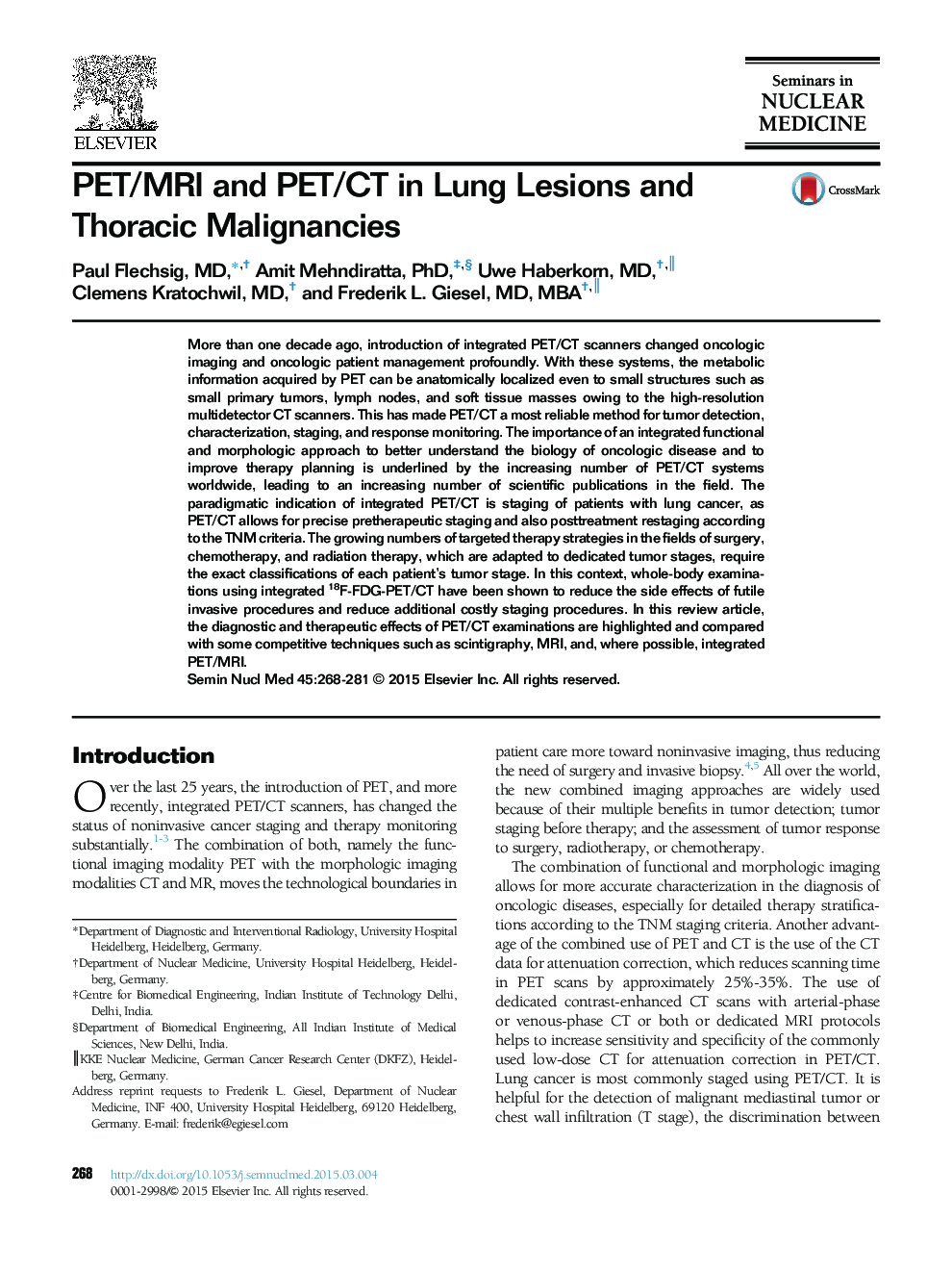| Article ID | Journal | Published Year | Pages | File Type |
|---|---|---|---|---|
| 4250929 | Seminars in Nuclear Medicine | 2015 | 14 Pages |
More than one decade ago, introduction of integrated PET/CT scanners changed oncologic imaging and oncologic patient management profoundly. With these systems, the metabolic information acquired by PET can be anatomically localized even to small structures such as small primary tumors, lymph nodes, and soft tissue masses owing to the high-resolution multidetector CT scanners. This has made PET/CT a most reliable method for tumor detection, characterization, staging, and response monitoring. The importance of an integrated functional and morphologic approach to better understand the biology of oncologic disease and to improve therapy planning is underlined by the increasing number of PET/CT systems worldwide, leading to an increasing number of scientific publications in the field. The paradigmatic indication of integrated PET/CT is staging of patients with lung cancer, as PET/CT allows for precise pretherapeutic staging and also posttreatment restaging according to the TNM criteria. The growing numbers of targeted therapy strategies in the fields of surgery, chemotherapy, and radiation therapy, which are adapted to dedicated tumor stages, require the exact classifications of each patient’s tumor stage. In this context, whole-body examinations using integrated 18F-FDG-PET/CT have been shown to reduce the side effects of futile invasive procedures and reduce additional costly staging procedures. In this review article, the diagnostic and therapeutic effects of PET/CT examinations are highlighted and compared with some competitive techniques such as scintigraphy, MRI, and, where possible, integrated PET/MRI.
